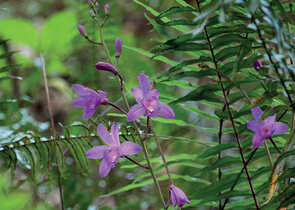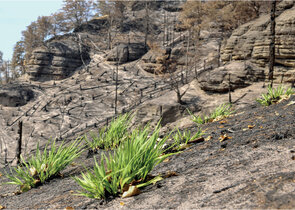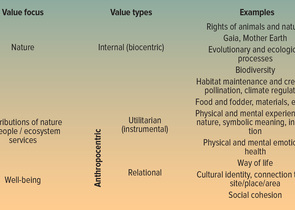Fifty Years of the Beskydy/Beskids Mts. Protection and Conservation


Half a century. This is the time during which the landscape inhabited by man can change very significantly. Fifty years ago, exactly on 5 March 1973, the Beskydy/Beskids Mountains Protected Landscape Area (PLA) was declared in north-eastern Moravia (Moravian-Silesian Region). At that time, communist regime was “enthusiastically” being built and many currently inconceivable intentions had targeted just the Beskydy/Beskids Mts., e.g. support to building weekend cottages for workers from the Ostrava industrial region there or transformation of mountain pastures and meadows into arable land to compensate fields destroyed during coal mining. New infrastructure was being developed in the valleys, while people were leaving traditional wooden cottages with small fields on the mountain slopes and moving into centres of villages. Therefore, the forest was progressing on the hills as well as constructions in the valleys. Meadows and pastures and consequently, sheep, orchids, and insects were declining. If we look into the 50-year history of the PLA, we will find that some of the requirements for the use of the landscape have been still topical; about others, we only know from eyewitnesses.
Nature Conservation 2024 — 30. 5. 2024 — On Nature in the Czech Republic — Print article in pdf
The Šumava/Bohemian Forest Mts./Bohemian Forest Mts. Protected Landscape Area Celebrates 60 Years

It seems almost unbelievable how long nature conservation has been in effect – and on such a large territory and at the same time so successfully. After all, a national park has been established on most of the territory of the original Šumava/Bohemian Forest Mts./Bohemian Forest Mts. Protected Landscape Area (PLA), and several dozens of new small-size Specially Protected Areas have been designated in the remaining area! Together with the Bayerischer Wald/Bavarian Forest National Park, it is a huge forest ecosystem with high level of protection and conservation: across 417,000 hectares there is no logging, within more than 30,000 hectares there is no game hunting. Therefore, Nature has been building its real cathedral there.
Nature Conservation 2024 — 30. 5. 2024 — On Nature in the Czech Republic — Print article in pdf
Development of an Area after the Fire in the České Švýcarsko/Bohemian Switzerland National Park

Experts in a range of disciplines are currently studying the impacts of the 2022 České Švýcarsko/Bohemian Switzerland National Park fire on different ecosystem components in the fire area, and are also monitoring spontaneous natural restoration there. The present article summarises some of the first empirical observations, which can partly also be seen by visitors to the National Park, and includes several photographs comparing the situation between 2022 and 2023. Exact results of these studies will undoubtedly be the topic of scientific publications after the completion of ongoing research projects.
Nature Conservation 2024 — 30. 5. 2024 — On Nature in the Czech Republic — Print article in pdf
Editorial

This special issue contains selected articles from The Nature Conservation Journal CZ from the previous year, 2023, and is published in May. It marks 20 years since the accession of the Czech Republic to the European Union. The year 2004 saw the largest enlargement of the EU with the accession of 10 new members. The Czech Republic celebrated its geopolitical return to its rightful place. This event brought significant benefits in various fields such as economy, freedom of movement, and the sharing of democratic and cultural values with developed European countries. While a few may hold a different opinion, let me present some reflections on these historical events from the perspective of nature and landscape conservation.
Nature Conservation 2024 — 30. 5. 2024 — Preface — Print article in pdf
Protected Areas in the World: Current State and Prospects

When one says “nature conservation”, many people recall various boards with a notice “protected area”. It is no surprise. Not only in the Czech Republic territorial protection or area-base conservation is among the oldest and at the same time most common approaches in protection, conservation and management of natural and landscape heritage. Moreover, there have been recently appearing various opinions whether protected areas really fulfil their mandate and whether area-based conservationdeserves at least a significant renovation (BHOLA et al. 2020, FENG et al. 2021, WALSH 2021, JONES et al. 2022, RAYMOND et al. 2022, ROBSON et al. 2022, WAUCHOPE et al. 2022, WILLIAMS et al. 2022, ZENG et al. 2022). This prompts the question about the current state of the art in global protected area network and in particularly what we have known on its real effectiveness.
Nature Conservation 2023 — 5. 6. 2023 — International Nature Conservation — Print article in pdf
International Trade in Endangered Species of Wild Fauna and Flora in the Czech Republic, European Un

The trade in wildlife, its parts and products is at least as old as recorded humankind´s history. Without wishing to start thoughtful intellectual considerations we would like to stress that it had initially been a swap or a barter, later accompanied by monetary trade which consequently mostly replaced the former. Wildlife trade has recently been moving increasingly to the Internet.
Nature Conservation 2023 — 5. 6. 2023 — International Nature Conservation — Print article in pdf
An Off-the-scale and Turning Fire in the České Švýcarsko/Bohemian Switzerland National Park

On Sunday 24 July, a fire broke out in the České Švýcarsko/Bohemian Switzerland National Park (northern Bohemia) which due to its extent will go down in the history of not only this National Park. Mainly dry Norway spruce (Picea abies) monocultures having been damaged by a European spruce bark beetle (Ips typographus) outbreak burned down, but also valuable ecosystems and a part of the village of Mezná were affected. The fire was preceded by dry and warm weather with record temperatures of up to 36 °C. At the time of writing this contribution, more than a thousand firefighters had been extinguishing seats of fire for 16 days, which is too early for an evaluation of various aspects. It has however already been obvious that the event will become a turning point in the attitude to forests in the Czech Republic.
Nature Conservation 2023 — 5. 6. 2023 — Special Issue — Print article in pdf
Hundred-year History of Nature Conservation Legislation in the Czech Republic

Thirty-year anniversary of the current Act on Nature Conservation and Landscape Protection is enhanced by an even older anniversary. In 2022, a century has passed since submitting the very first proposal for nature conservation act by the Member of the National Assembly of Czechoslovakia Jaroslav V. Stejskal. Therefore, let us briefly remember efforts by nature conservationists and naturalists to obtain legislative nature conservation and landscape protection in former Czechoslovakia, then the Czech Republic.
Nature Conservation 2023 — 5. 6. 2023 — Special Issue — Print article in pdf
The National Platform on Ecosystem Services in the international context of nature conservation and

A founding meeting of the National Platform on Ecosystem Services (NPES) was held within the framework of the integrated LIFE project One Nature in Prague in October 2022. The establishment of the Platform reflects a long-term development in ecosystem service assessment both in the Czech Republic and abroad. We are at present witnessing a shift in nature conservation goals and ways which have been increasingly including ecosystem services, nature´s contributions to people and in a broader context nature´s values. The aim of this article is to take a closer look at the present NPES context and objectives especially from the perspective of plural natural values and ecosystem service assessment in relation to ecosystem conservation and restoration following the international context.
Nature Conservation 2023 — 5. 6. 2023 — Focusing on the Public — Print article in pdf

